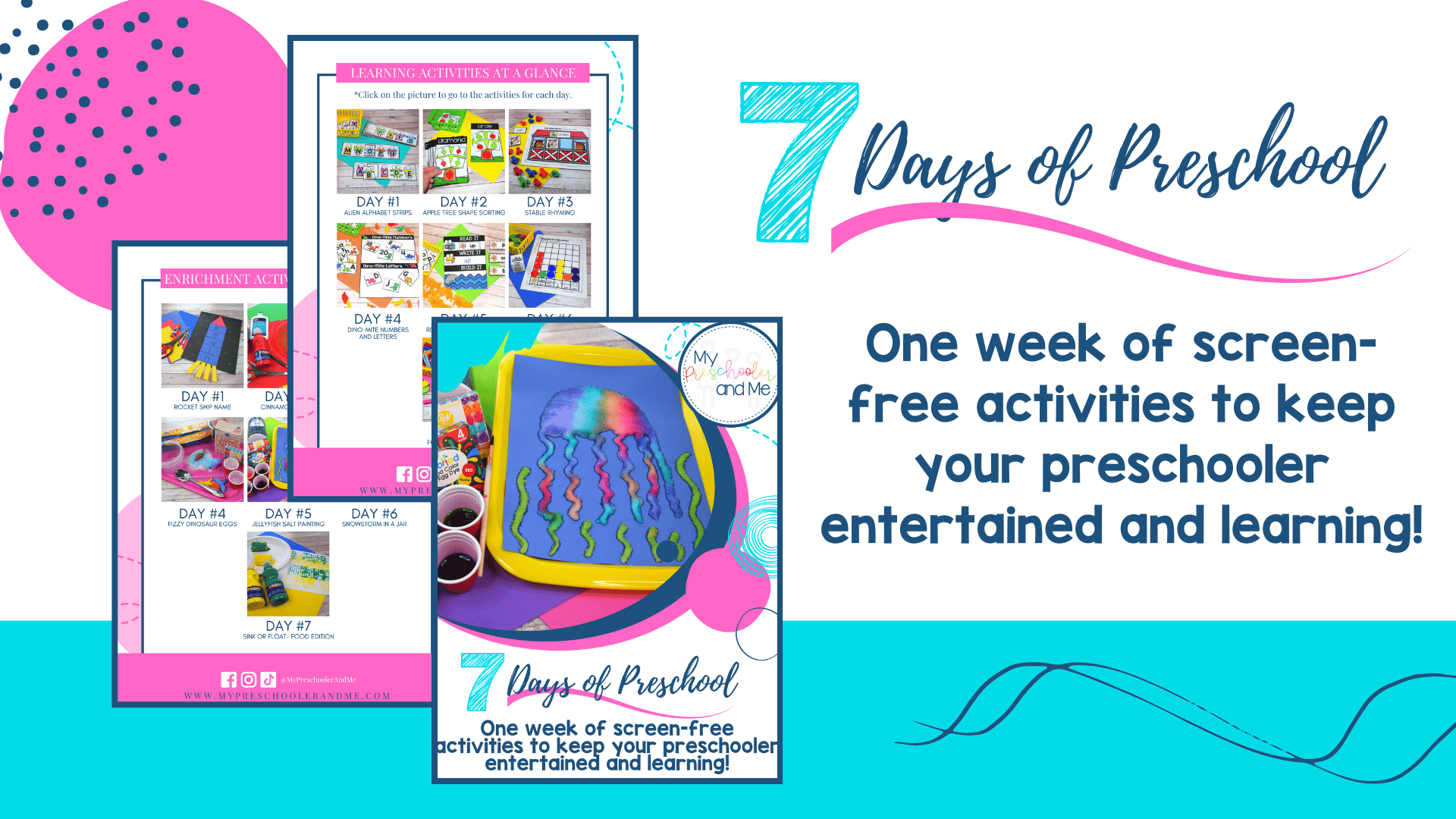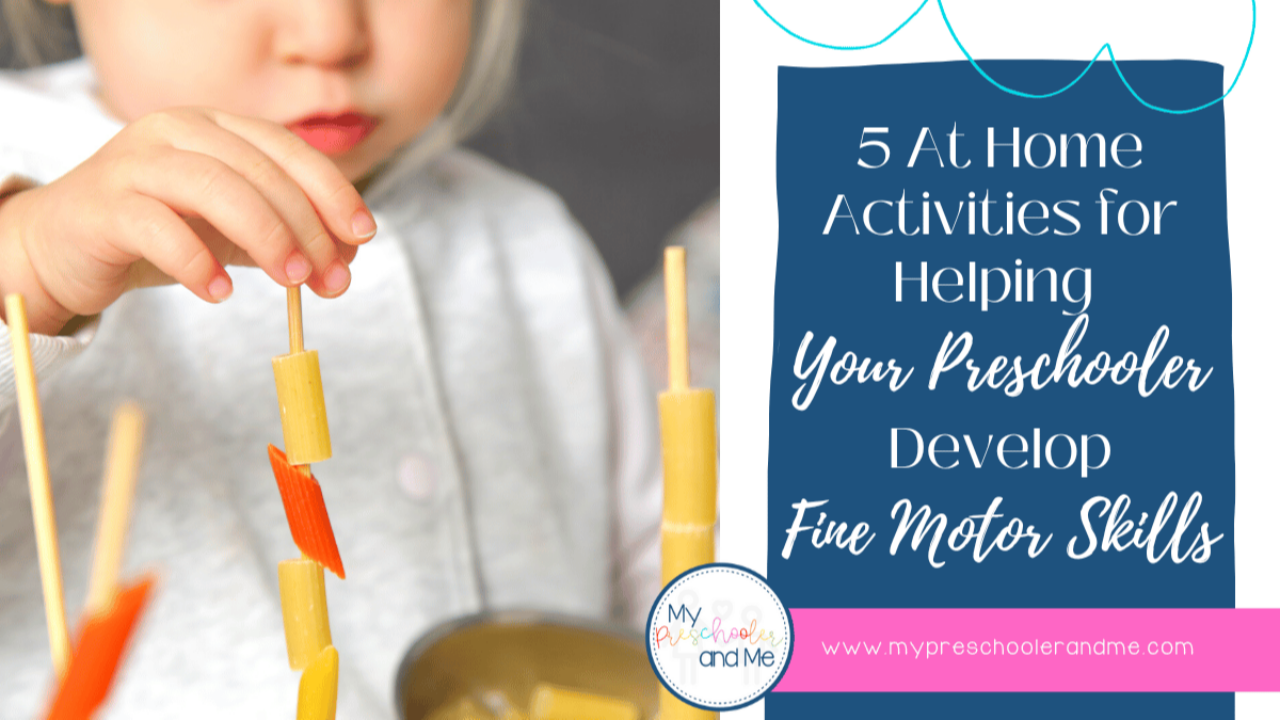
5 At Home Activities for Helping Your Preschooler Develop Fine Motor Skills
Fine motor skills aren't something that preschoolers develop overnight. In fact, it takes most preschoolers several years to fully develop their fine motor skills.
Young children develop these skills at different rates. Some children develop these skills faster than others. However, a lot of it has to do with how much practice and exposure a child gets to activities that encourage fine motor muscle development.
Just like our larger muscle groups, fine motor muscles need exercise and practice in order to fully develop. As a parent of a preschooler, there are several things that you can do to help your child develop these smaller muscle groups.
In just a minute, I'm going to share a list of activities that you can try at home to help your child develop their fine motor skills, but before then, I'd like to invite you to grab your free copy of my latest resource- 7 Days of Preschool!
Inside, you will receive 14 screen-free preschool activities to start using with your child today. If you'd like to grab your free copy, click the link here. I’ll send it directly to your inbox within a few minutes.
Fine Motor Skills Defined
Perhaps you've heard the term “fine motor skills” before, but do you truly know what it means? Before you can begin helping your child develop these skills, you need to establish an understanding of what these skills are.
Fine motor skills involve the use of smaller muscle groups found within our fingers and hands. Think about all of the things you use your hands for during a typical day.
You use your hands and fingers to tie shoes, cut vegetables, put on makeup, take money out of your wallet or purse, etc. Your ability to perform all of these tasks is the result of strong and accurate fine motor skills.
If you'd like to learn more about the difference between fine motor and gross motor skills, check out this helpful YouTube video posted by Understood.
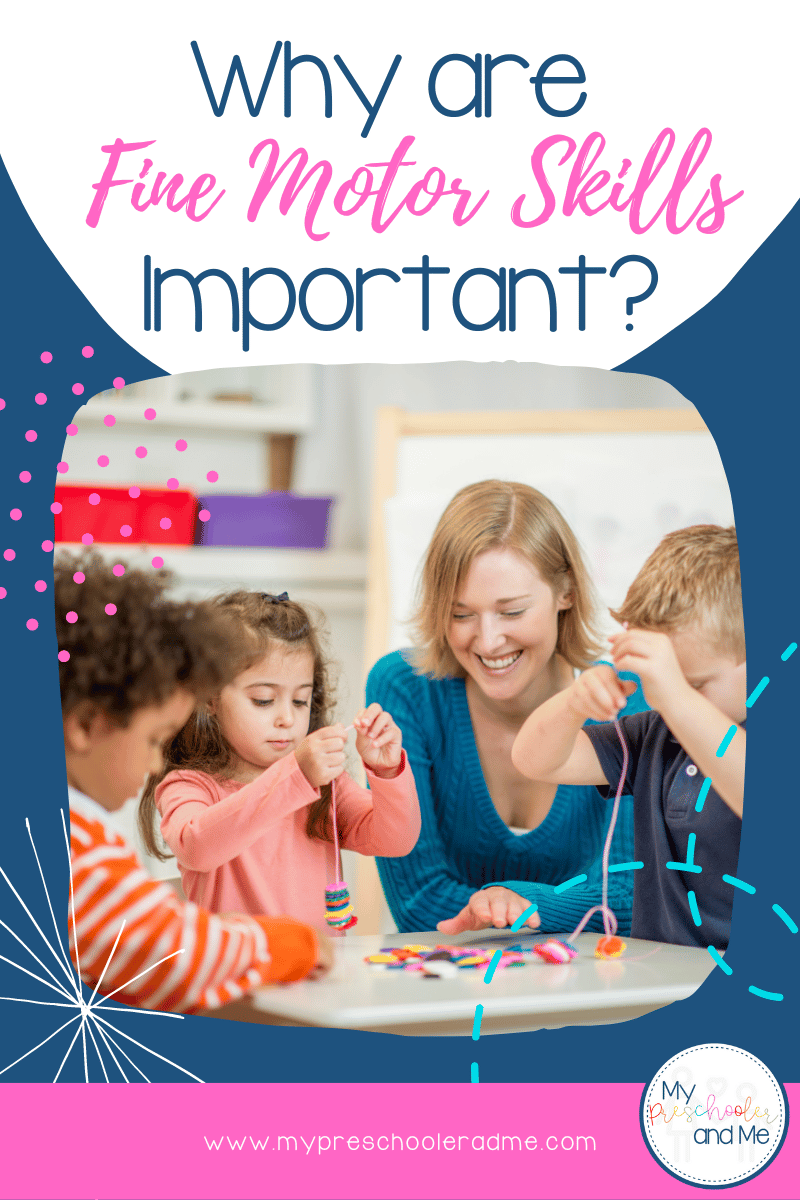
Fine Motor Skills Importance
Fine motor skills are important for your preschooler because your child needs them in order to write, pick up small objects, open snacks, string beads, and perform other everyday tasks.
It's important for children to strengthen fine motor muscles because when their muscles are strong, their fine motor skills become more accurate and refined. These strong muscles allow them to do things such as open snacks or button pants independently.
When fine motor muscles are weak and still developing, children require more assistance from adults to accomplish these tasks.
Fine motor skills play a huge part when your child is learning to write. Holding a pencil for a long period of time can be tiring at first. The accuracy at which your child forms letters and numbers is also a result of weak or strong fine motor skills.
As your child’s fine motor muscles develop, your child is also learning how much force or pressure to apply during individual tasks. When children first begin to write, they squeeze and press down very hard with their pencils.
Over time, they begin to figure out that writing doesn't require as much pressure as they first thought. This is a result of more refined fine motor skills.
If you suspect your child may be struggling with fine motor skills, Kidsense has a great list of things you can look for at a glance. They also offer consultations specifically for families who may be dealing with fine motor skill weaknesses. *My Preschooler And Me is not affiliated with Kidsense in any way.
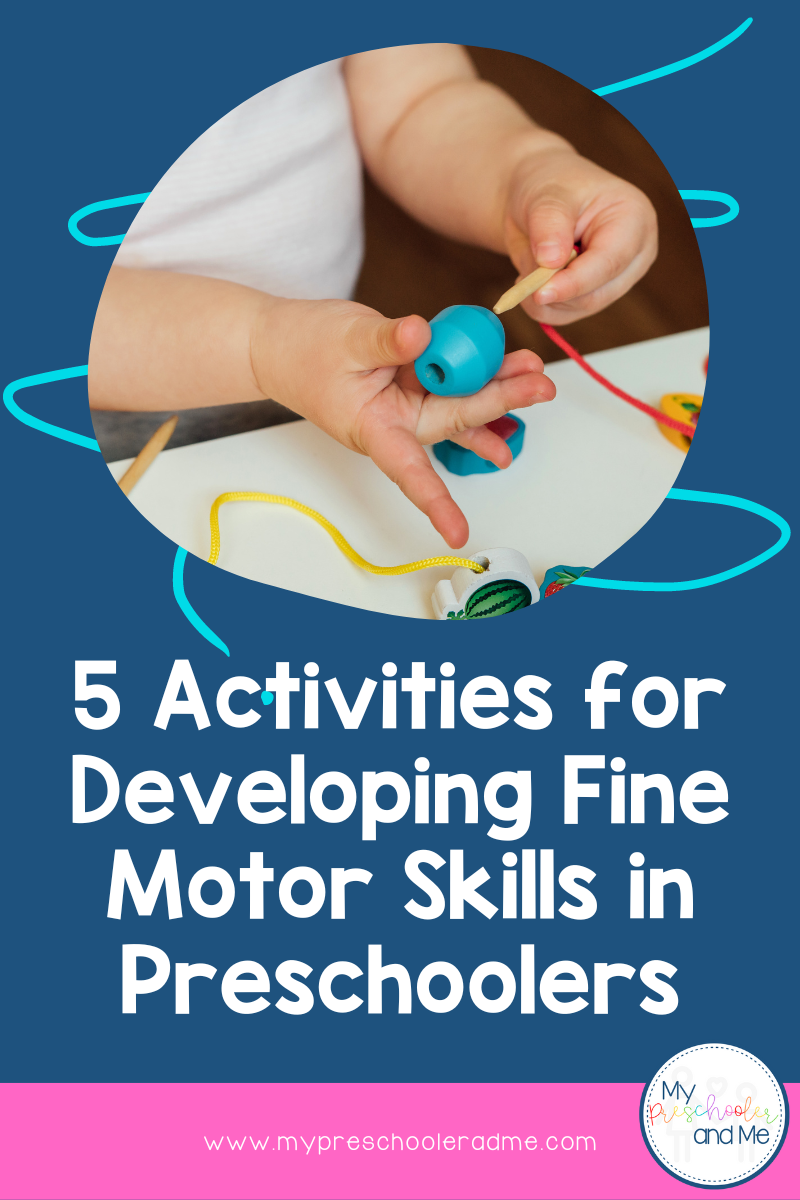
Activity for Fine Motor Skills Development
Just like our large muscle groups, fine motor muscles have to be exercised in order to strengthen. There are many simple activities you can do with your preschooler at home to aid in this transformation.
My goal is to help you simplify the process so you feel empowered to work with your preschooler more regularly…and by regularly, I just mean 3-4 times per week for 5-10 minutes or less. Not a huge time commitment at all.
To help you with this process, I came up with a fine motor skills list of 5 activities you can do at home to help your preschooler.
You’ll probably discover that you have most of the supplies needed somewhere around your house. If not, they are rather inexpensive to purchase. *Pro Tip- check your local Dollar Tree first if you need to purchase supplies.

Button Stacking
This super simple activity is great for helping your preschooler develop accuracy and precision as they practice placing the buttons on the pasta pieces. In addition to fine motor practice, you can also teach your preschooler about color and shape names, “more than” and “less than,” sorting, height, counting, and patterns all from this one activity.
Remember, you don’t have to cover all of these topics at once. You can set this activity up again and again and cover a new learning concept each time. Don’t you love when one activity can be used to teach multiple concepts? I know I do!
Supplies Needed: Play-Doh, raw spaghetti noodles, plastic buttons. If you don't have buttons, you can use various types of pasta.
Instructions: Stick a piece of raw spaghetti into a ball of Play-Doh so it stands up straight. Have your preschooler string the buttons onto the spaghetti noodles.

Sticker Lines
Preschoolers love stickers! Stickers are a simple yet challenging tool you can use to help your preschooler develop fine motor skills. Encourage your child to peel the stickers off the paper independently as this is part of the process of developing those tiny finger muscles.
I suggest starting out with round or square stickers because they are much easier for preschoolers to peel independently.
Once your child becomes better and better at peeling simple shaped stickers, you can move to more complex shapes. However, if you notice your child getting frustrated with the stickers tearing or ripping, offer assistance and use an easier shaped sticker next time.
Supplies Needed: Construction paper, black marker, small stickers.
Instructions: Draw lines of various shapes across the paper. Have your preschooler cover the lines with the small stickers.

Torn Paper Snowflakes
This is a great activity to complete during the winter months. If you're reading this and it's not winter where you are, you can do this activity with any shape. Just make sure you draw the shape lines large enough and spaced out enough that your child has room to glue on the torn paper pieces.
I love this activity for helping preschoolers develop fine motor skills because they also get to practice gluing.
Gluing, especially with liquid glue, is an important kindergarten readiness skill for preschoolers to practice. Your child’s kindergarten teacher will love you if you help your child master this skill prior to kindergarten.
Supplies Needed: Blue and white construction paper, black marker, glue.
Instructions: Draw a snowflake shape (or any shape) with the black marker. Have your child rip the blue construction paper into small pieces. Then, glue the blue pieces over top of the black lines to form a snowflake.
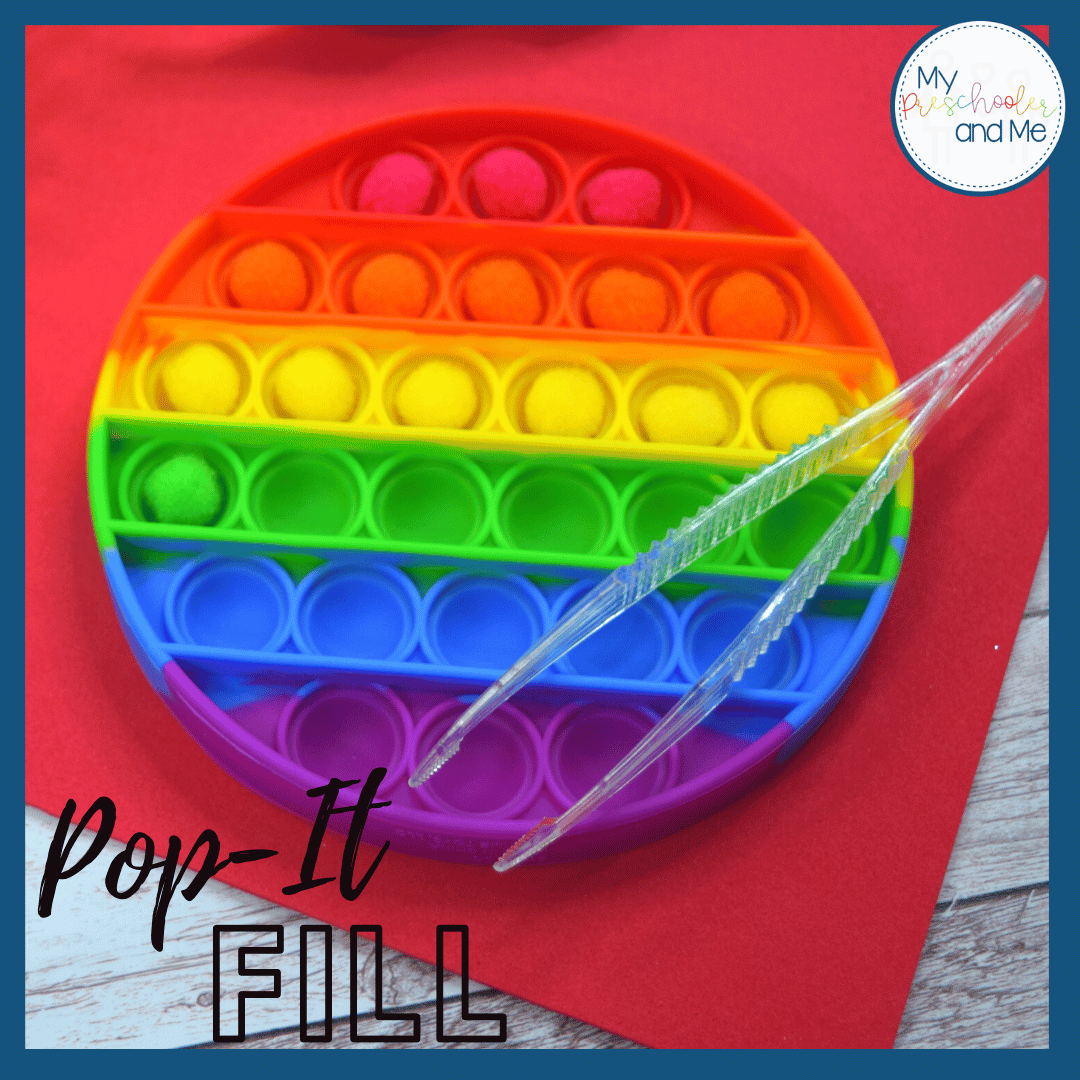
Pop-It Fill
Do you have a bunch of pop-its sitting around your house like we do? These fidget toys are really good for helping children stay focused and entertained.
You can add a little twist to how your child plays with a pop-it by providing small craft pom poms. This activity is great for helping with accuracy, too.
If you have a set of child-friendly tweezers, I highly recommend letting your child use those. You can usually find these at your local Dollar Tree in the teaching supplies section.
Anytime you can add tweezers to an activity, go for it! Tweezers are great for helping children strengthen fine motor muscles while also developing accuracy in placement.
Supplies Needed: A pop-it of any shape, small craft pom poms, and tweezers (if you have them).
Instructions: Lay your pop-it on the table. If you have tweezers, have your child use the tweezers to drop the pom poms into one spot on the pop-it. If you don't have tweezers, your child can just use their fingers.

Playing Play-Doh
In the end, nothing beats old-fashioned Play-Doh. Play-Doh is perfect for helping preschoolers develop and strengthen their fine motor muscles.
As your child smashes and mushes the Play-Doh, it requires him/her to apply force. Playing with Play-Doh helps children better understand the amount of pressure needed during activities. It also gives their muscles a good workout.
If you're interested in making your own homemade playdough, I've got a great recipe you can check out here.
Supplies Needed: Various cans of Play-Doh, cookie cutters, rolling pins, and other supplies.
Instructions: Play-Doh is wonderful for strengthening fine motor muscles. Have your child roll, smash, pull, and form the Play-Doh into different shapes and sizes.
Fine Motor Skills List
I often get asked which skills preschoolers need to know before entering kindergarten. I have compiled a complete list of skills your child should be working on in order to be better prepared for kindergarten. Inside, you will find a list of fine motor skills pertinent to preschoolers, too.
If you'd like to download a free copy of my Ultimate Kindergarten Readiness Checklist, you can grab it here.
Fine motor skills do take time and maturity to develop. The good news? We as preschool parents can expedite the process by intentionally creating learning opportunities for our children to complete at home.
This does not have to be a long drawn-out process. 2 or 3 activities per week for 5-10 minutes is all it takes to give your preschooler a jump start for kindergarten success!
Remember, you don't have to do this alone. I'm here at My Preschooler and Me to help you simplify the learning process at home. Check back for more tips soon!
Happy Teaching!
